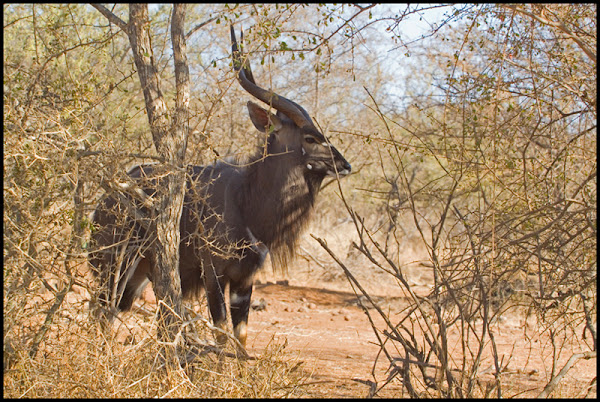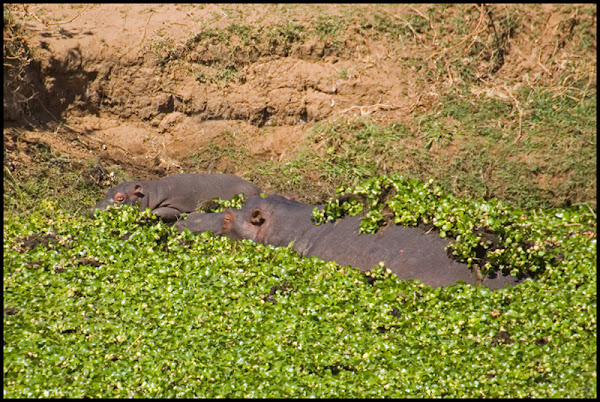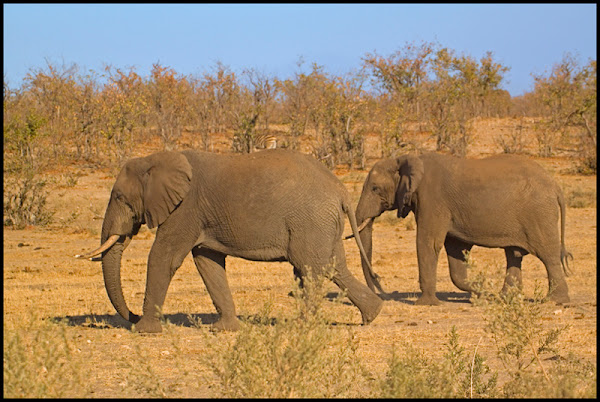Etapas del viaje / Trip sections:
El sexto día en el Parque Nacional Kruger se caracterizó por una gran cobertura vegetal, arbustiva, especialmente cerca de Olifants Camp. Por algún motivo, la presencia de aves fue menor que otros días, con sólo 35 especies observadas. Por el contrario, la de mamíferos fue la habitual, esta vez con un total de 17 especies.
The sixth day in the Kruger National Park was characterized by a large, shrubby vegetation cover, especially near Olifants Camp. For some reason, the presence of birds was lower than other days, with only 35 species observed. On the contrary, that of mammals was the usual one, with a total of 17 species.
La crónica completa del viaje en eBird, incluyendo el mapa y la lista de aves observadas, se puede obtener pinchando en este enlace.
The complete eBird trip report, including map and the list of bird species can be seen in this link.
South Africa map. Location 15 corresponds to Kruger National Park.
Como avistamientos destacados hay que reseñar una mangosta esbelta, junto con los antílopes habituales (impalas, ñúes, cebras, bushbuck, nialas, kob acuático, etc), hipopótamos, elefantes y jirafas. Fue curioso, porque en esta zona no se dejaron ver los grandes depredadores. Respecto a las aves, nuestros primeros picabueyes piquigualdos, casi en Mopani, dos suimangas pechiblancos en Letaba, y una garza goliat y un jabirú africano, a las que se sumaban algunas especies más habituales.
As most interesting sightings I must mention a common slender mongoose, along with the usual antelopes (impalas, wildebeest, zebras, bushbuck, nyala, Ellipsen waterbuck, etc.), hippos, elephants and giraffes. It was curious, because big predators were completely absent from this area. With respect to the birds, our first yellow-billed oxpeckers, almost in Mopani, two white-breasted sunbirds in Letaba, and a goliath heron and a saddlebill, added to more usual species.
Kruger National Park map and area explored on August 23th, 2019.
Recorrimos la carretera S44 en dirección a Letaba, haciendo las oportunas paradas. Una vez en Letaba, visitamos el Matambeni Bird Hide y el Nhlanganini Waterhole, para después dirigirnos al norte, hacia Mopani.
We drove through the S44 road towards Letaba, making the appropriate stops. Once in Letaba, we visited the Matambeni Bird Hide and the Nhlanganini Waterhole, and then we moved towards Mopani.
Route on August 23th, 2019.
Pero primero bajamos al río Olifants, al lado del campamento del mismo nombre, donde la tarde anterior vimos una hiena. No hubo suerte, pero sí vimos alción cabecipardo y avefría armada. Entre los arbustos cercanos, algún niala.
But first we went down to the Olifants River, next to the camp of the same name. In that river we saw, the previous afternoon, a hyena. There was no luck, but we were able to spot a brown-hooded kingfisher and a Blacksmith lapwing. Among the nearby bushes, some nyalas.
Ya en dirección a Letaba, siguiendo el cauce del río, merece la pena parar en el Olifants Lookout. Aunque todo estaba algo lejano, sí se vieron facoceros de sabana, kob acuático oriental e hipopótamos.
Already in the direction of Letaba, following the riverbed, it is worth to stop at the Olifants Lookout. Although everything was a bit far away, we saw common warthog, Ellipsen waterbuck and hippos.
Muy cerca de Letaba, el Matambeni Bird Hide también es interesante, aunque todo volvía a estar bastante lejos.
Very close to Letaba, the Matambeni Bird Hide is also interesting, although everything was again quite far away.
La parada en Letaba para comer sirvió para apuntar a la lista el suimanga pechiblanco. Y ya en dirección a Mopani, bastantes elefantes.
The stop in Letaba to have lunch served to add to the species list the white-breasted sunbird. And in the direction of Mopani, many elephants.
Y ya en Mopani, no hay que dejar de visitar los Shipandani y Pioneer Hides. Tuvimos la suerte de ver como bajaba a beber una manada de búfalo cafre, que junto con jirafas, alcaraván acuático y picabueyes piquigualdas, amenizaron el final de la jornada.
And in Mopani, you should not miss the Shipandani and Pioneer Hides. We were lucky to see how a herd of Cape buffalos arrived there to drink, which along with giraffes, water thick-knee and yellow-billed oxpeckers, made a good end to the day.
La lista completa de especies observadas en la ruta entre Olifants y Mopani (35 especies de aves, 17 de mamíferos y una de reptiles) y su localización puede encontrarse en este enlace.
The complete list of species observed between Olifants and Mopani (35 bird species, 17 of mammals, 1 of reptiles) and its location can be seen in this link.



























